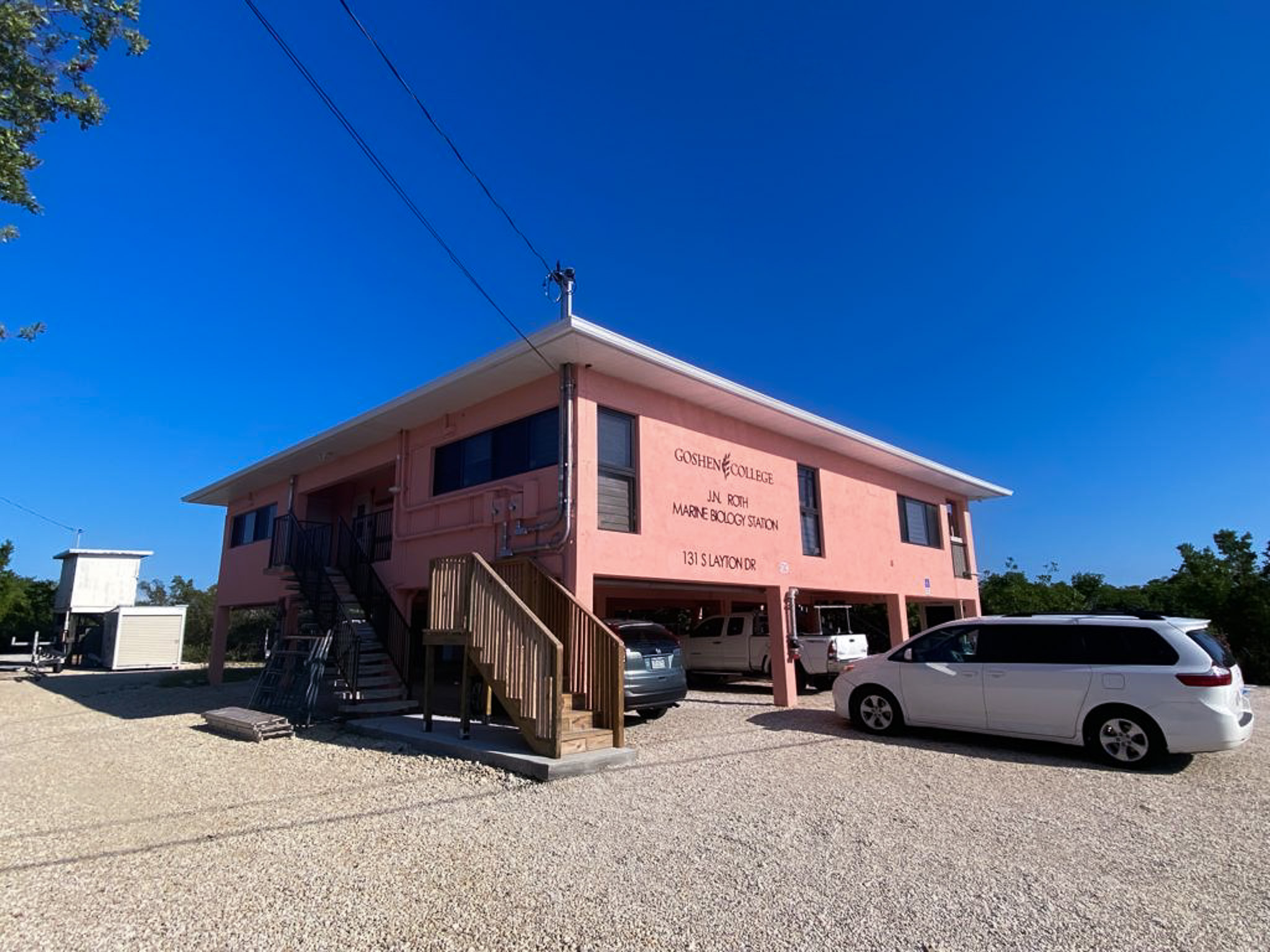For five Goshen College marine biology students, going to class this semester means stepping into a boat and motoring into the Florida Keys.
Phillip Allman, associate professor of marine biology, is the new director of GC’s marine biology program at the recently refurbished J.N. Roth Marine Biology Station in Layton, Florida.Ashley Christison, a junior marine biology major from San Diego, said a day of class opens with a discussion in the morning followed by time on the water or activities in the afternoon. On their first day of class, the students learned about ocean and wind currents and practiced their learning by illustrating currents on a beach ball. On other days, she said, the students might go snorkeling or prepare for their senior research projects.
“Marine biology is something that I love,” Christison said. “Phil tries so hard to make these classes and experiences for us, and he is doing an amazing job. I feel like I am learning all the time even if I don’t completely realize it. Phil is always open for us to ask him questions about the material, research, careers, jobs and everything else in between.”
Allman, who joined the biology department over the summer, was assistant professor of biological sciences at Florida Gulf Coast University. While at FGCU, he taught an introductory biology course to 182 students, and his upper-level classes had about 32 students.
In Layton, he is devoted to just five marine biology students.
“I decided to accept this position because I viewed it as an opportunity to grow as a teacher of science and as a researcher,” Allman said. “The marine biology program at GC has offered a very unique and special experience for students who have been fortunate enough to spend time at the marine biology station.”
In September 2017, the marine biology station sustained substantial damage from Hurricane Irma. The storm made landfall in the Florida Keys as a Category 4 hurricane, but eventually reached a Category 5 with winds reaching 177 mph. The resulting storm surge caused flooding to the lower level of the station and cracked the building’s concrete foundation, necessitating major renovations to prepare for the next wave of students.
While the station does not currently have a rebuilt classroom or lab facility, the residence area has been completed. There are two large rooms for students, each containing three bunk beds that connect to their own bathroom and shower facilities. Adjacent to the residence area is an instructor room, large kitchen, dining room and living area.
With renovations, the marine biology program can continue to offer hands-on experience. “I’m excited to have the opportunity to help write this new chapter in the program,” Allman said.
Jody Saylor, director of faculty development and academic innovation, helped hire Allman in her previous role as chair of the biology department, and gave him a glowing endorsement: “Dr. Allman was an easy choice for this position. … He has worked as a professor for about 15 years and is an exceptional educator.”
Saylor also described him as having “an easygoing attitude,” and said he was an “excellent mentor for marine science students.
“He shares our big dreams for building the marine program, so we are excited to have him join our campus community!”
Allman, an avid scuba diver, is no stranger to the seas. On a recent trip to the Galápagos in Ecuador, he and his wife, Karyn, spent three days at a dive site where hammerhead sharks were drawn in by extremely strong currents.
“I’ve always loved learning about what goes on in our oceans growing up,” said Amy Baca, a senior from Akron, Indiana. “Having a career centered around marine life has just always been what I’ve wanted to do in my future. I personally like knowing what kinds of things I’m observing in the water, which is why I am so fond of taxonomy and identification.”
Annalise Nisly, a senior from Bluffton, Ohio, commented on the value of this program in her senior year. “The ability to have a place to stay while trying to foster these connections and gain experience is a unique occasion that a lot of small colleges — especially in our geographic location — aren’t able to provide,” Nisly said. “There isn’t a typical day of class. Every day is different.”


